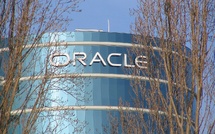With the advent of the Internet of Things (IoT) and big data, many technologies that seemed only a distant future, have become a part of our life. Among such innovations are smart houses that fully automate everyday life. At some factories, each machine is connected to a single system of industrial Internet of things. And natural foods are produced with little or no human involvement.
For twenty-odd years, urban farms have been mutating from cute private gardens and flowerbeds to high-tech farming complexes. However, this did not diminish craving of ordinary consumers for their own farmer experiments. This trend is gaining momentum every year and is attracting new adepts. Obviously, manufacturers of home gadgets could not miss such an opportunity.
In the early 2000s, the concept of the Internet of things appeared and became actively filled with technological content, penetrating into all spheres of our life. In 2012, Panasonic announced the full-scale production of SMARTHEMS energy management systems for smart homes, and announced that it intends to introduce this system into all aspects of its line: from kitchen appliances to air conditioners.
The concept of smart farming implies development of intelligent systems that control all natural processes from the time of planting to the main parameters (humidity, temperature, light, etc.). Smart farming gadgets are also able to analyze and predict the future harvest. Systems operate on the basis of large data - they collect and analyze information coming from different sources, build relationships and forecasts. For example, urban farms systems controls number of farms, harvest, set parameters, on the basis of which it can deduce statistics, make forecasts and give recommendations. The goal of smart agro technologies is to create an imitation of a natural ecosystem in which active human participation is not required.
The market of home smart farming technologies is actively developing, as can be seen from activity of large manufacturers of home appliances. Panasonic, Philips and others already have their own smart home farming developments.
An example of such technologies is a gadget with cartridges filled with seeds and nutrient solution, each of which is programmed for a certain kind of plant. This principle is used in some kitchen gadgets, such as PowerPlant Growing Machine, Click & Grow. Water is pumped into a reservoir, moisturizing the sponge and providing watering of the plants. Another US development is self-moistening containers. They grow fresh greens and herbs, using technology that allows water to moisten the soil under the influence of capillary forces and to keep the roots of plants healthy (for example, Lets Patch). However, these devices work, rather, in a test mode, without large harvests.
On the other hand, aeraponic installations, equipped with smart technologies have become very popular. Plant roots are placed in a tank filled with ultravitamin solution, which, according to the aeration principle, saturates the plant with water and minerals. These include AeroGarden and the mini garden Fashion Grower. The amount of harvest is small and unpredictable, but the installations are very compact and fit even on the table.
Like any emerging market, the smart farming market is facing a number of challenges. So, many decisions in this area are far from technical perfection - after all, in fact we are trying to take on the role of nature. For example, in the absence of a "closed" system without a specially created microclimate and maintaining the necessary temperature, the quality and composition of products invariably changes for the worse. Then, there is a danger of harvesting the crop at the wrong time or breaking the light regime, which will lead to spoiled products. In addition, many products require particularly complex growing techniques. For example, the cycle from seed to strawberry berries amounts to two years. And at every stage, light, fertilizer, humidity and temperature should be different.
This leads to another problem - the complexity with fine-tuning smart agro systems. Industrial high-tech farms operate with serious amounts of data, sufficient for analysis and conclusions. Yet, it is simply impossible to accumulate such a data in a small home farm environment. A possible solution would be to combine home farms of one or even different producers into a single network, and thus aggregate data on a wider sample.
However, there is another problem: since the market is still developing, the price threshold is quite high. So, at this stage it is difficult to talk about the interest of the mass consumer. It turns out to be a vicious circle: mass accessibility is necessary for the transition to a new level. Thus, the market still needs time and understanding of the demand for smart farming projects to attract investors.
source: forbes.com
For twenty-odd years, urban farms have been mutating from cute private gardens and flowerbeds to high-tech farming complexes. However, this did not diminish craving of ordinary consumers for their own farmer experiments. This trend is gaining momentum every year and is attracting new adepts. Obviously, manufacturers of home gadgets could not miss such an opportunity.
In the early 2000s, the concept of the Internet of things appeared and became actively filled with technological content, penetrating into all spheres of our life. In 2012, Panasonic announced the full-scale production of SMARTHEMS energy management systems for smart homes, and announced that it intends to introduce this system into all aspects of its line: from kitchen appliances to air conditioners.
The concept of smart farming implies development of intelligent systems that control all natural processes from the time of planting to the main parameters (humidity, temperature, light, etc.). Smart farming gadgets are also able to analyze and predict the future harvest. Systems operate on the basis of large data - they collect and analyze information coming from different sources, build relationships and forecasts. For example, urban farms systems controls number of farms, harvest, set parameters, on the basis of which it can deduce statistics, make forecasts and give recommendations. The goal of smart agro technologies is to create an imitation of a natural ecosystem in which active human participation is not required.
The market of home smart farming technologies is actively developing, as can be seen from activity of large manufacturers of home appliances. Panasonic, Philips and others already have their own smart home farming developments.
An example of such technologies is a gadget with cartridges filled with seeds and nutrient solution, each of which is programmed for a certain kind of plant. This principle is used in some kitchen gadgets, such as PowerPlant Growing Machine, Click & Grow. Water is pumped into a reservoir, moisturizing the sponge and providing watering of the plants. Another US development is self-moistening containers. They grow fresh greens and herbs, using technology that allows water to moisten the soil under the influence of capillary forces and to keep the roots of plants healthy (for example, Lets Patch). However, these devices work, rather, in a test mode, without large harvests.
On the other hand, aeraponic installations, equipped with smart technologies have become very popular. Plant roots are placed in a tank filled with ultravitamin solution, which, according to the aeration principle, saturates the plant with water and minerals. These include AeroGarden and the mini garden Fashion Grower. The amount of harvest is small and unpredictable, but the installations are very compact and fit even on the table.
Like any emerging market, the smart farming market is facing a number of challenges. So, many decisions in this area are far from technical perfection - after all, in fact we are trying to take on the role of nature. For example, in the absence of a "closed" system without a specially created microclimate and maintaining the necessary temperature, the quality and composition of products invariably changes for the worse. Then, there is a danger of harvesting the crop at the wrong time or breaking the light regime, which will lead to spoiled products. In addition, many products require particularly complex growing techniques. For example, the cycle from seed to strawberry berries amounts to two years. And at every stage, light, fertilizer, humidity and temperature should be different.
This leads to another problem - the complexity with fine-tuning smart agro systems. Industrial high-tech farms operate with serious amounts of data, sufficient for analysis and conclusions. Yet, it is simply impossible to accumulate such a data in a small home farm environment. A possible solution would be to combine home farms of one or even different producers into a single network, and thus aggregate data on a wider sample.
However, there is another problem: since the market is still developing, the price threshold is quite high. So, at this stage it is difficult to talk about the interest of the mass consumer. It turns out to be a vicious circle: mass accessibility is necessary for the transition to a new level. Thus, the market still needs time and understanding of the demand for smart farming projects to attract investors.
source: forbes.com



















